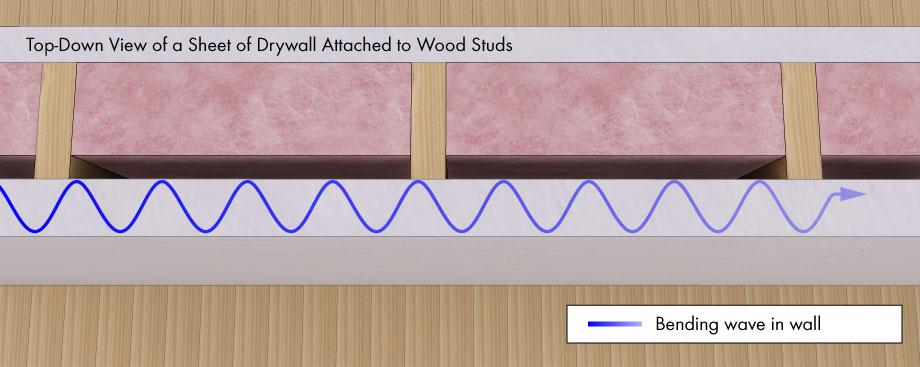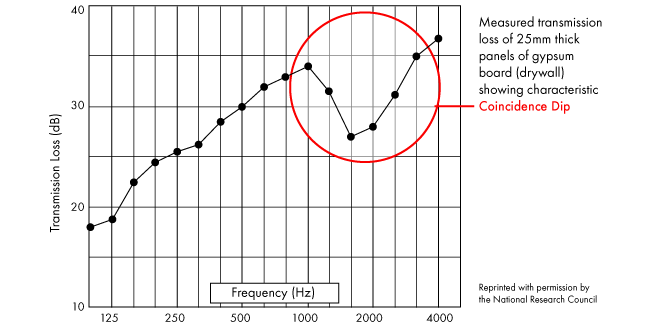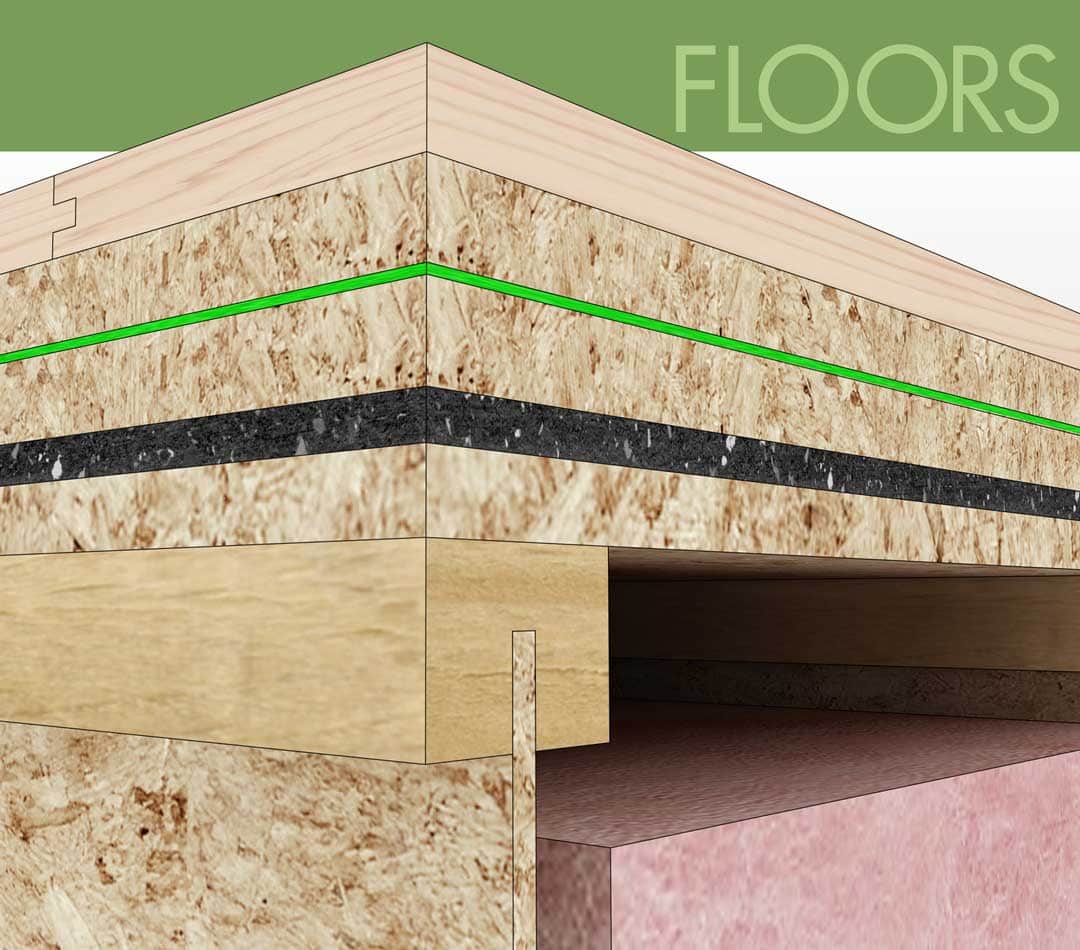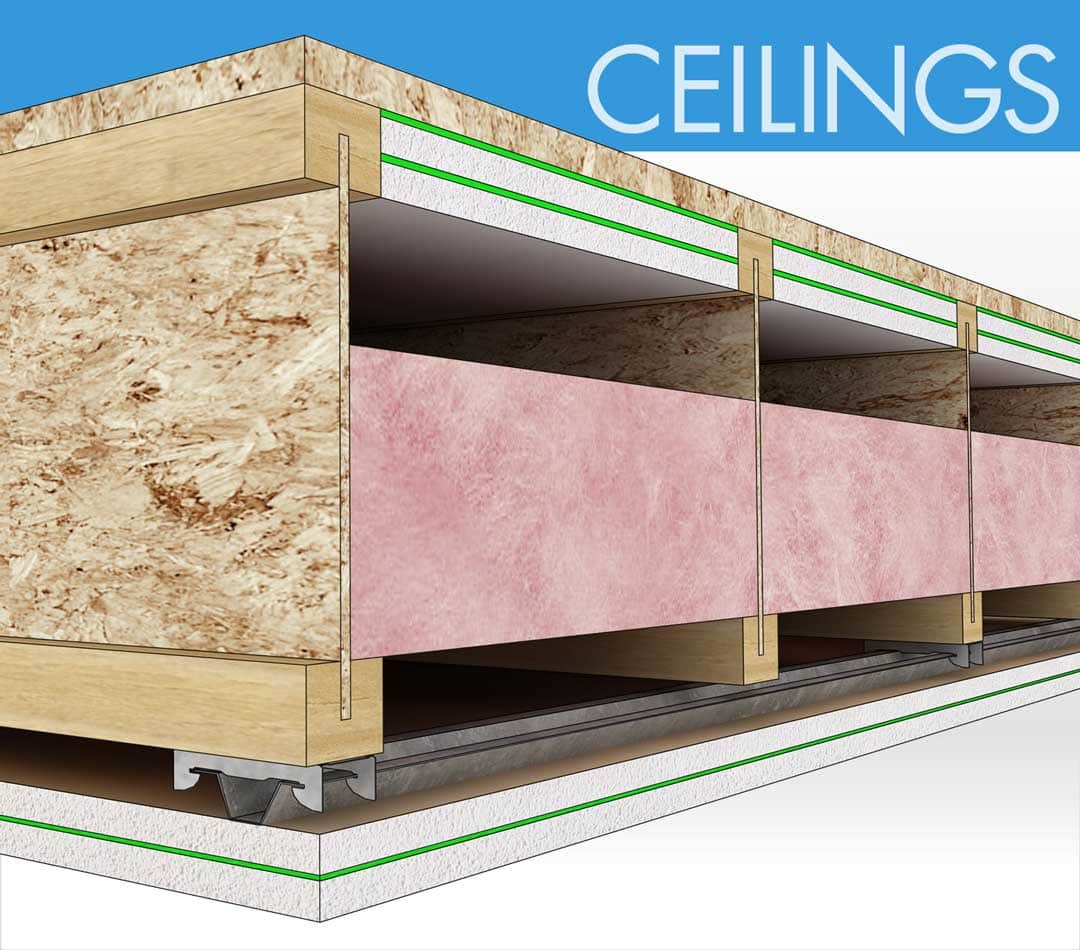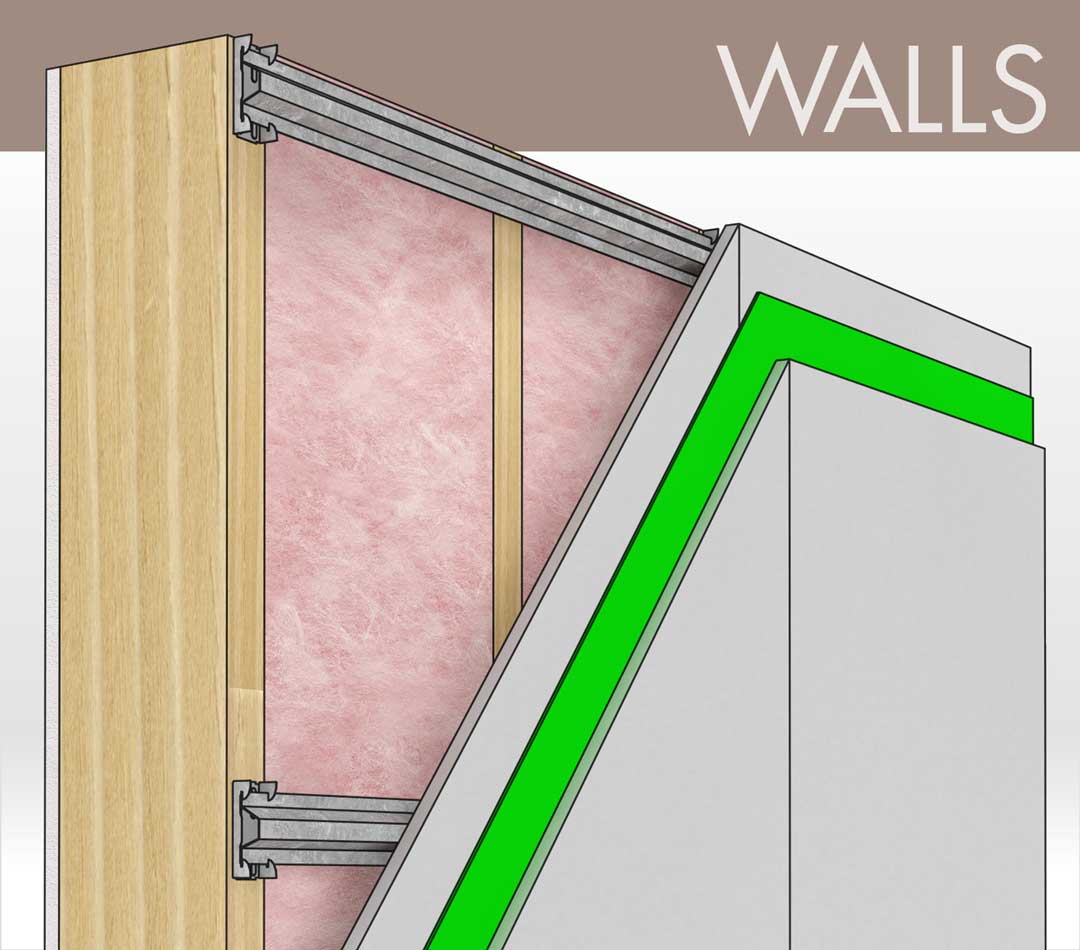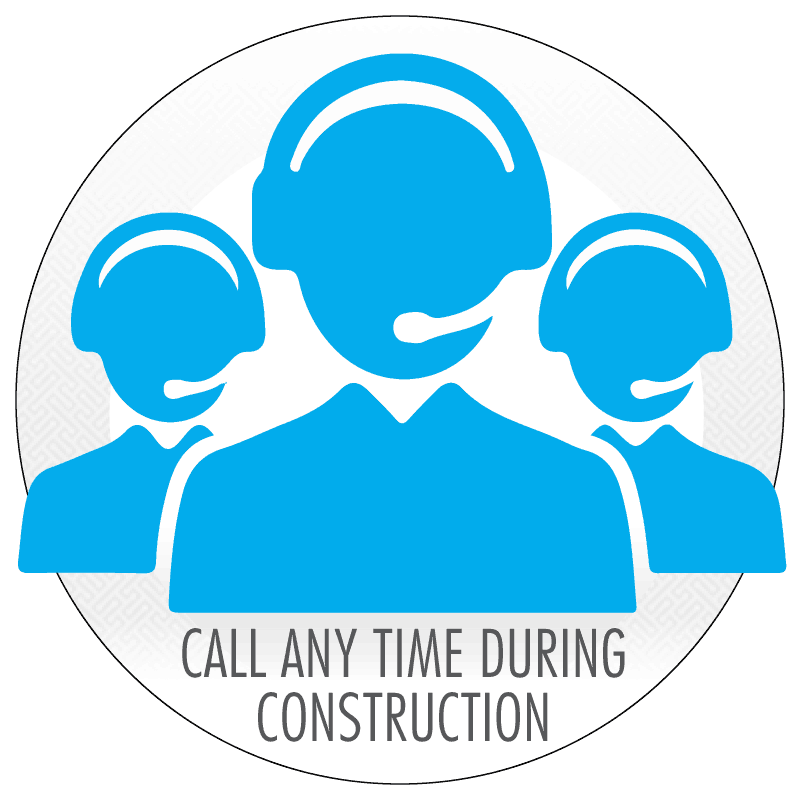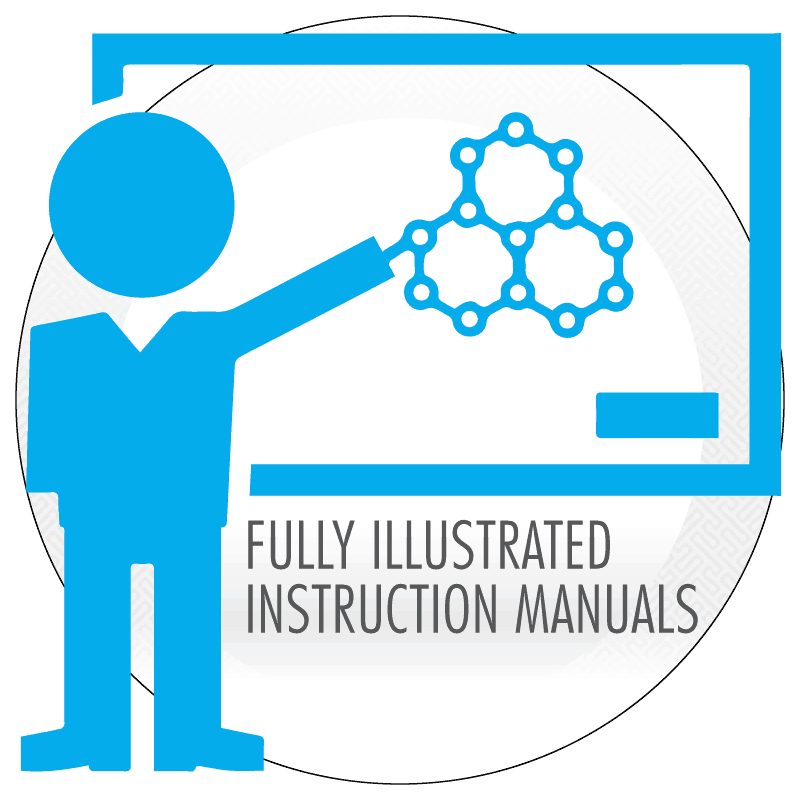Flooring: protecting a concrete slab
A concrete slab is generally an asset for airborne sound isolation. The large mass (weight) provides for a great deal of sound isolation from vibrations entering or leaving the room.
But a slab does have an airborne sound weakness at its Coincidence Point (frequency). A floated plywood floor is often used to guard the slab against this coincidence frequency. The floated floor also shields the room from incoming impact vibrations.
How sound travels through concrete
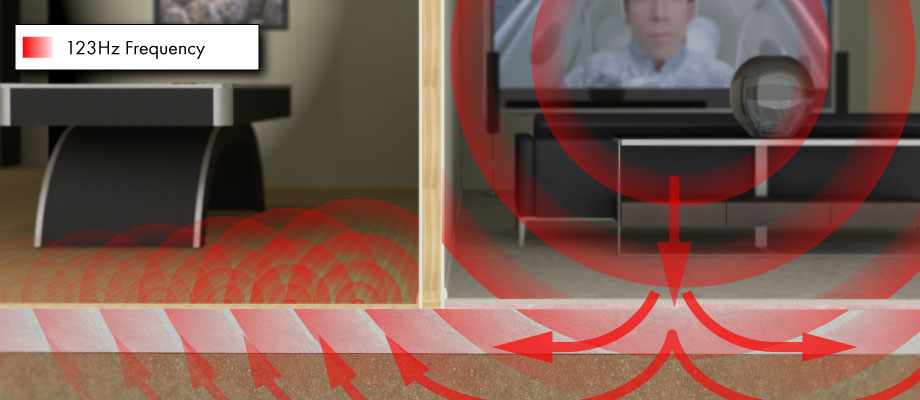
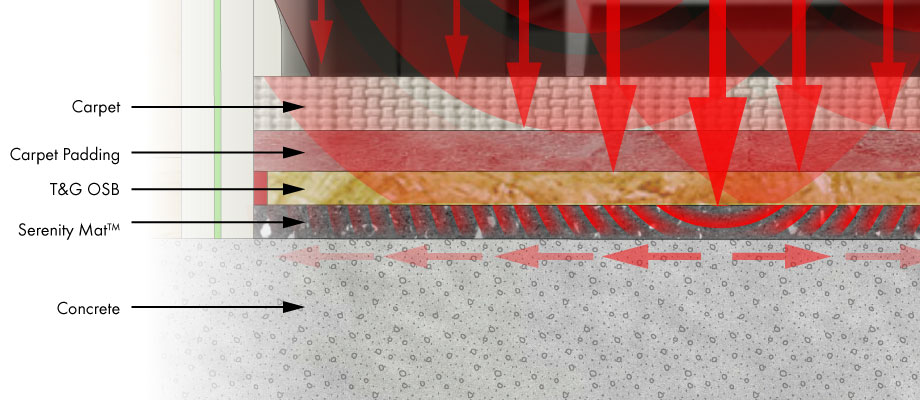
A couple of additional bonuses. A floated plywood floor over the slab will provide a tactile feel during playback or performance. It’s also warmer than a slab.
If you’re curious about Coincidence Frequencies and why they’re a problem, then read on.
What is Coincidence?
When a sound wave hits a panel like drywall, it starts a vibration wave in the panel itself. Vibration travels through a material as a “bending wave.”
Different Peak to Peak Distance = Different Speed
The speed of a bending wave traveling through a panel can vary. Depending on the material and the frequency, the bending wave can travel slower or faster than the speed of sound in air. The speed of any vibration traveling through air (sound we hear) is a constant. Sound in air always travels at 768 MPH.
What happens when the bending wave is traveling at the SAME speed as the sound vibration through the air? We find the waves now overlap. The waves are said to be coincident. Coincident waves reinforce each other producing a significant drop in isolation at that frequency. The materials ability to isolate that frequency is reduced. This is a bad thing for us.
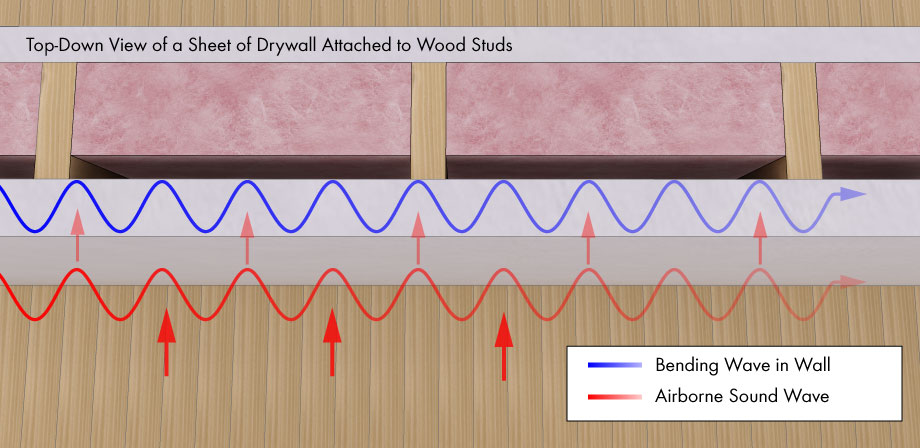
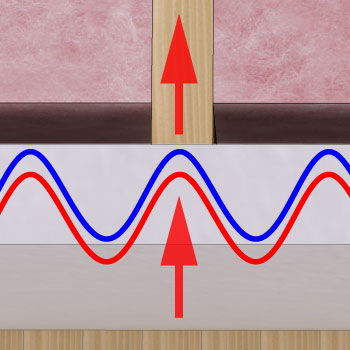
The Coincident Waves reinforce, dropping performance.
The blue bending wave is traveling through a drywall panel as seen from above. The Red wave is the same frequency traveling in the air. When the two curves (speeds) overlap as shown, a reinforcement takes place and the material will then conduct that frequency, and those near it, very efficiently. This frequency is called the Coincidence Point, or Critical Frequency. Any solid panel has a Coincidence Point, including drywall, plywood, concrete and glass.
Higher numbers in this chart means higher isolation. Transmission Loss plot using the coincidence point of 25mm Gypsum Board (Drywall).
See the drop in performance at the coincidence point?
Coincidence is a function of stiffness. Stiffer materials will have a lower coincidence point, consequently concrete starts troubling us between 100Hz and 200Hz
| Coincidence Frequencies for Some Common Building Materials | |
|---|---|
| 1/2” Drywall – 3100Hz | 4” Concrete – 183Hz |
| 5/8” Drywall – 2500Hz | 5” Concrete – 150Hz |
| 3/4” Plywood – 1200Hz | 6” Concrete – 123Hz |
The great mass of the slab will generally isolate sound vibration quite well, except at and around the Coincidence Point (frequency). At this coincidence frequency and thereabouts, the slab may conduct vibration quite well. To guard against this, we set up a barrier with Serena Mat and plywood. This shielding limits the slab from becoming a conduit for coincidence frequency conduction.

